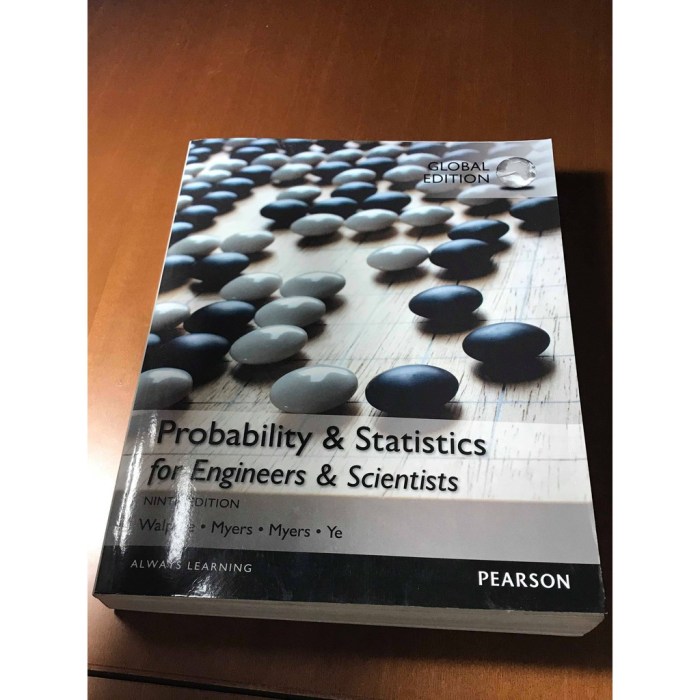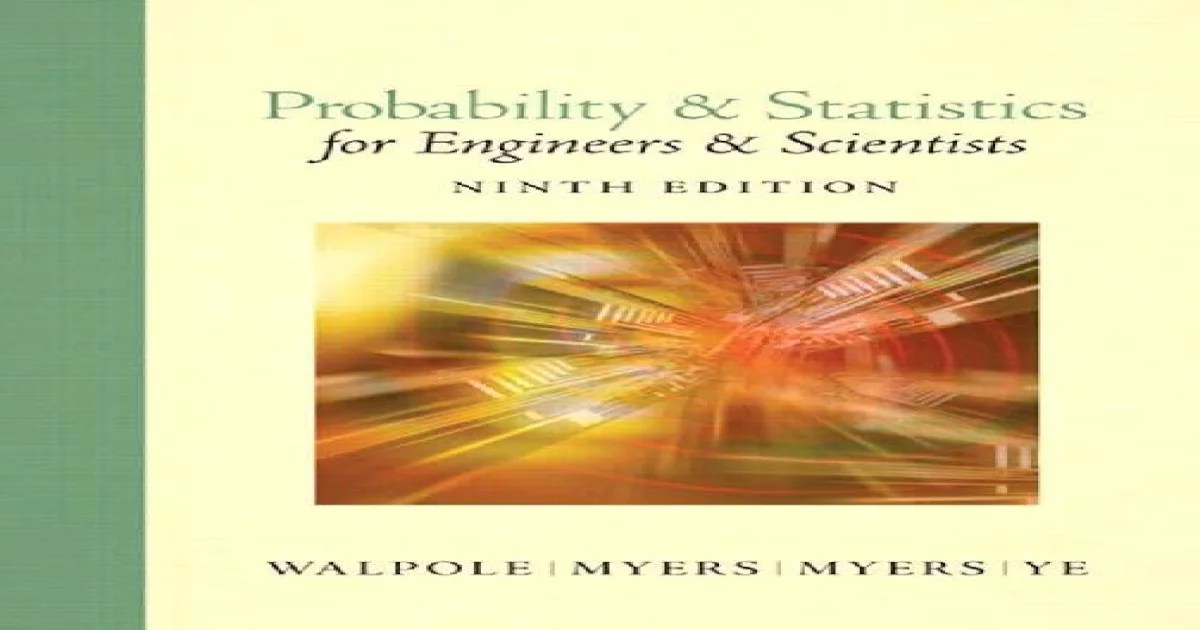Probability and statistics for engineers 9th edition pdf – Probability and Statistics for Engineers, 9th Edition PDF, is an invaluable resource for engineering professionals seeking to enhance their understanding of statistical concepts and their application in real-world engineering scenarios.
This comprehensive guide provides a thorough exploration of fundamental probability theory, statistical inference, regression analysis, time series analysis, and other relevant topics. With its clear explanations, practical examples, and up-to-date coverage, this book serves as an indispensable tool for engineers seeking to advance their knowledge and skills in probability and statistics.
1. Introduction to Probability and Statistics for Engineers

Probability and statistics play a crucial role in engineering applications, providing a framework for analyzing and interpreting data, making predictions, and designing reliable systems. Probability distributions are fundamental in modeling engineering phenomena, such as the distribution of loads on a bridge or the failure rates of components in a system.
Examples of real-world engineering problems that involve probability and statistics include:
- Designing structures to withstand earthquakes or other natural hazards
- Optimizing production processes to minimize defects
- Predicting the reliability of electronic components
2. Probability Theory

Probability theory provides a mathematical framework for quantifying uncertainty and making predictions about random events. The axioms of probability define the basic properties of probability, while conditional probability and Bayes’ theorem allow us to update our beliefs in light of new evidence.
Axioms of Probability
- The probability of an event is a number between 0 and 1.
- The probability of the sure event (the event that always happens) is 1.
- The probability of the union of two disjoint events is the sum of their probabilities.
Conditional Probability and Bayes’ Theorem
Conditional probability is the probability of an event occurring given that another event has already occurred. Bayes’ theorem provides a way to update our beliefs about the probability of an event based on new evidence.
3. Statistical Inference: Probability And Statistics For Engineers 9th Edition Pdf
Statistical inference is the process of making inferences about a population based on a sample. Hypothesis testing and confidence intervals are two common methods of statistical inference.
Hypothesis Testing
Hypothesis testing is a statistical procedure used to determine whether there is sufficient evidence to reject a null hypothesis (the hypothesis that there is no difference between two groups or that a certain parameter has a specific value).
Confidence Intervals
Confidence intervals are a range of values that are likely to contain the true value of a parameter. They are calculated using a sample of data and a specified confidence level.
4. Regression Analysis
Regression analysis is a statistical technique used to model the relationship between a dependent variable and one or more independent variables. Linear regression and logistic regression are two common types of regression models.
Linear Regression
Linear regression is a statistical model that assumes a linear relationship between the dependent variable and the independent variables. It is used to predict the value of the dependent variable for a given set of values of the independent variables.
Logistic Regression
Logistic regression is a statistical model that assumes a logistic relationship between the dependent variable and the independent variables. It is used to predict the probability of an event occurring for a given set of values of the independent variables.
5. Time Series Analysis
Time series analysis is a statistical technique used to analyze data that is collected over time. ARIMA models and GARCH models are two common types of time series models.
ARIMA Models
ARIMA (Autoregressive Integrated Moving Average) models are a class of statistical models that are used to analyze time series data. They are based on the assumption that the current value of a time series can be predicted as a linear combination of past values of the time series and past values of the forecast errors.
GARCH Models, Probability and statistics for engineers 9th edition pdf
GARCH (Generalized Autoregressive Conditional Heteroskedasticity) models are a class of statistical models that are used to analyze time series data that exhibits volatility clustering. They are based on the assumption that the variance of the forecast errors is not constant, but rather varies over time.
6. Other Topics in Probability and Statistics for Engineers

Other topics in probability and statistics that are relevant to engineers include experimental design and quality control.
Experimental Design
Experimental design is the process of planning and conducting experiments in order to obtain valid and reliable data. It involves selecting the appropriate experimental design, determining the sample size, and controlling for confounding variables.
Quality Control
Quality control is the process of ensuring that products or services meet specified requirements. It involves statistical techniques such as sampling inspection, process control charts, and acceptance sampling.
FAQ Overview
What are the key concepts covered in Probability and Statistics for Engineers, 9th Edition?
The book covers fundamental probability theory, statistical inference, regression analysis, time series analysis, and other relevant topics essential for engineers.
How can I use this book to improve my engineering skills?
The book provides practical examples and applications of statistical concepts in real-world engineering scenarios, helping engineers enhance their problem-solving abilities.
Is this book suitable for both practicing engineers and students?
Yes, the book is designed to cater to the needs of both practicing engineers seeking to refresh their knowledge and students pursuing a deeper understanding of probability and statistics in engineering.